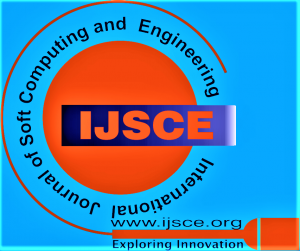Volume-7 Issue-1, March 2017
- Version
- Download 20
- File Size 4.00 KB
- Create Date March 30, 2017
- .
Volume-7 Issue-1, March 2017, ISSN: 2231-2307 (Online)
Published By: Blue Eyes Intelligence Engineering & Sciences Publication
Computational Optimization Aberration Coefficients of an Einzel Lens Operated Under Zero Magnification
Samir Khudhir Al-ani1, Nada Abdulfatah Khattab2
Implementation of Fog Computing in Cloud Enterprise for Data Security and Privacy Management
Poorva Khemaria1, Shiv Kumar2, Babita Pathik3
An Enhancement on Block Cipher Key for Advanced Encryption Standard
Ratnesh Kumar Jain1, Shiv Kumar2, Babita Pathik3
Lossless Image Compression through Huffman Coding Technique and Its Application in Image Processing using MATLAB
Vikash Kumar1, Sanjay Sharma2
Requirements Engineering Techniques: A Systematic Literature Review
Kanos Matyokurehwa1, Nehemiah Mavetera2, Osden Jokonya3
Dragonfly Algorithm Based Fuzzy Logic Controller for Power Electronic Converter
N. Nachammai1, R. Kayalvizhi2
Survey on Reversible Data Hiding in Encrypted Images by Reversible Image Transformation (RIT)
Silpa Rajan1, Minu Lalitha Madhavu2
A Review on MANET using Soft Computing and Dempster-Shafer Theory
Naveen Pathak1, Anand Bisen2
Edutainment for Effective Teaching and Learning of Digital Natives
Nor Azlina Abd Rahman1, Vinothini Kasinathan2, Rajasvaran Logeswaran3, Nurwahida Faradila Taharim4
Exploring the Practice of Resource Planning and Leveling (RP&L) Among Contractors in the Kenyan Construction Industry
Shadrack Mutungi Simon1, Abednego Gwaya2, Stephen Diang’a3
MENTOR as a Learning Method for Slow Learners
Jerry Chong Chean Fuh1, Khalida Shajaratuddur Harun2, Nor Azlina Abd Rahman3, Sandra A. P Gerald4
An Investigation of the Performance of Local Contractors in Kenya
Monicah Wairimu Chonge
Design A Program to Simulate the Active Antennas
Maha Abdul Ameer Kadhum
Autonomously-Reconfigurable Wireless Mesh Networks
Rucha Dilip Patil1, C. M. Jadhav2
Design and Performance Analysis of a Robust Power System Stabilizer for Single Machine Infinite Bus using ADRC Approach
Issa Y. S. Ali1, Sedat Nazlibilek2
Smart Electronic Garbage Management System-Based IOT
Pankaj Agarwal1, Shreeya Sharma2, Lavanya Gupta3, B. Manideep4
An Implementation of Sensors based to Mitigate over Train-Elephant Conflicts
V. Kanchana1, M. Prabu2
Failure Mode and Effect Analysis (FMEA) of Aeronautical Gas Turbine using the Fuzzy Risk Priority Ranking (FRPR) Approach
Hamed Ghasemian1, Qasim Zeeshan2
